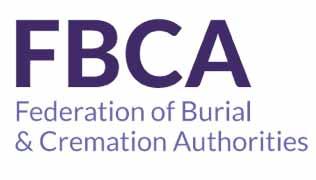
44 minute read
President’s Report – August 2020
Alan José FICCM
The FBCA President presents the FBCA Certificate of Membership L/R Zoe McMillan, Alan Jose and Catherine Powell
Advertisement
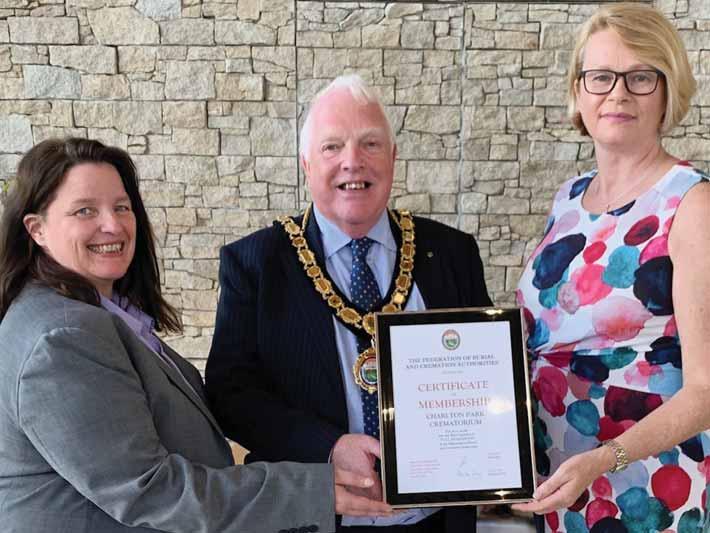
In my capacity as President of the FBCA, I had the privilege of visiting Charlton Park Crematorium, on Thursday 20 August, to present Pure Cremation and Charlton Park Crematorium with their Certificate of Full Membership of the Federation of Burial and Cremation Authorities.
I was welcomed by Catherine Powell Co-Founder of Pure Cremation and their Customer Experience Director and by Zoe McMillan who is the site manager. I was given an extensive tour of the crematorium, including the chapel, and was most impressed with the very high standards of materials and workmanship that is evident throughout the building.
The site, which is set in the very pretty Hampshire Countryside near Andover, was particularly busy at the time of my visit with the installation of the third cremator in progress and when touring the impressive offices it was interesting to the well organised teams at work looking after the different operational aspects of the business.
Pure Cremation was founded in 2015 by experienced funeral professionals who wanted to offer high quality direct cremations to families across England and Wales
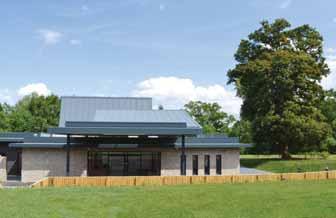

who, as demand gathered pace realised that a crematorium would be a key pillar of their growth plan. By 2017, having secured external investment of £7.35m, the group was ready to fund the construction of a state-of-the-art venue.
In April 2018, work began on the 10.5 acre site, a former plant nursery, and by December 2018 the envelope of the cremator hall was completed. Two DFW cremators were installed and the first unattended direct cremations were able to take place at Charlton Park Crematorium.
In May 2019 the entire Pure Cremation operation moved from its base in Newbury, creating the UK’s first fully integrated facility bringing together client care, customer support and cremation onto one site. Decades of funeral experience contributed to the flow of the floorplan and design ideas from European venues add to its appeal and flexibility and in June 2019 the crematorium hosted its first traditional funeral service. Since then the crematorium has swiftly become a valued community asset not only for ceremonies but as a popular destination for educational visits. The team’s passion for demystifying cremation has resulted in a virtual tour which is featured on the website – one of only two in the UK and the only one to show its cremator hall. The 2382 cremations carried out at Charlton Park Crematorium in the first full year of operation, sets a new record, confirmed by the Cremation Society, for the


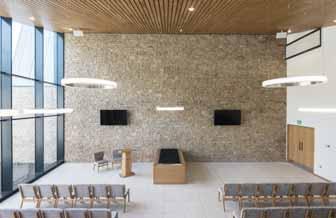
highest number of cremations in the last 20 years. So it’s no surprise that a third cremator is being installed already, allowing the dedicated team of technicians to handle the increased volume, within its usual shift patterns, avoiding the round the clock working that was




necessary during the heights of the recent pandemic.

2019

Planning for Burial and Cremation Space
Session Chair :
Professor Hilary J. Grainger OBE, BA(Hons), PhD, PFHEA, FRSA
Chair – The Cremation Society of Great Britain
Professor Grainger has been a member of the Cremation Society’s Council since 2008. She is Professor of Architectural History at University of the Arts London and an Honorary Professorship in the Department of Theology and Religion at Durham University. She works as an Institutional Reviewer for Quality Assurance Agency (QAA) England and Scotland and as an International Reviewer worldwide.
A specialist in late nineteenth and early twentieth century English domestic architecture, Hilary is the acknowledged authority on the architecture of British crematoria and on the late Victorian architect Sir Ernest George. She has published and lectured widely in Europe and America and her pioneering book, “Death Redesigned: British Crematoria, History, Architecture and Landscape”, received a joint commendation from the Chartered Institute of Library and Information Professionals as an outstanding reference book published in 2006. Her widely acclaimed monograph “The Architecture of Sir Ernest George” was published in 2011.
She is co-author (with Honorary Vice-President Douglas Davies, fellow Council member Dr Peter Jupp, and former Council member, Stephen White) of “Cremation in Modern Scotland: History, Architecture and the Law” (published by Birlinn, 2017), which resulted from research funded by the Leverhulme Trust and hosted by the Department of Theology and Religion at Durham University. Hilary is currently preparing a book “Designs on Death: The Architecture of Scottish Crematoria 1895-2018”. She is President of the Association for the Study of Death and Society (ASDS), National Chair of The Victorian Society and chairs the Fabric Advisory Committee of Lichfield Cathedral. She was appointed as Director of CAMEO (Crematoria Abatement of Mercury Emissions Organisation) in July 2019.


Professor Grainger was awarded an OBE in the Queen’s 2018 New Year’s Honours List for Services to Higher Education.
Text and photo reproduced with the kind permission of The Cremation Society of Great Britain.
Professor Hilary J. Grainger OBE, BA(Hons), PhD, PFHEA, FRSA
Good morning ladies and gentlemen, and welcome to the second day of conference.
It’s my great pleasure to be introducing the first two speakers of the day. The first of whom is Lee Searles who is Director of Planning for Enzygo Limited, a post that Lee has held for five years.
Lee began his career in planning with the London Planning Advisory Committee where he co-wrote its “Planning for Burial Space Strategy in London” and more recently drawing on the principles of that strategy, he has been involved in two research projects, two studies to inform burial and cremation space planning in England, one in Harborough and one in Northampton. Indeed, the Harborough scheme was awarded the best local planning research scheme of 2018 by planning magazine and colleagues who are familiar with the history of our conferences will know that planning for cremations and the space for crematoria and burial space is a perennial issue which concerns many authorities and many private organisations. Particularly, prevalent after the second world war where space was at a premium, but I know it’s a very important current topic so we are delighted to welcome Lee who I think it eminently qualified to speak to us on the title of his paper –Planning for Burial and Cremation Space. Welcome.
Planning for Burial and Cremation Space Lees Searles, BA, PGDip, MRTPI, Director of Planning, Enzygo Ltd.
Thank you very much, the limit of my knowledge on cemetery’s is actually spanning 20 years, but with two years at the beginning and two years at the end with literally nothing in between. But I think the story that,


hopefully I’ll tell through the work that we’ve done will give you some idea of the way in which the planning sector has approached, in terms of which planning for crematoria and burial space as I approach this topic and needs to approach it going forward.

Just few riders, I’m really going to talk about cemetery space and I’m going to use cemetery space as a general term I know there are lots of different definitions I could use for different kinds of cemetery provision and burial, ground provision and church yard provision and so on. I’m really just going to talk about cemetery’s in the round, also I’m not going to say very much about crematoria. Our work mainly focused on cemetery’s and there are others that are a completely different set of considerations when thinking about crematoria’s. I will touch on it in relation to one of our case studies that we’ve done.

I’m essentially going to set out the kind of considerations and approaches that authorities needs to take when thinking about what they might need in cemetery space looking forward and then give you three case studies. One from 20 years ago, two from more recently and I

hope that will give some food for thought. I think the first thing to say is local authorities have made strategic provision for cemetery land, but I think it many cases, it was a long, long time ago. I think our Victorian four fathers in to the early 1900’s made significant provision for burial and certainly when we were working in London, there was evidence that that had taken place. The issue is that of course that had been made and then from a planning perspective and I think this is evidence by the coverage that many local plan give of the topic, it had kind of been forgotten, we kind of rested on our laurels, the capacity started to get used up.

I think the other important point to make is that cemetery’s and the cemetery land in urban context in particular started to take on other roles and became useful as open spaces and recreational spaces, places of historical interest, places of wide adversity and equality quite apart from the core burial functions. Indeed, once provision was made and indeed expansion was often aligned adjacent to cemetery’s, over time in many local authorities, from a planning perspective that became forgotten and it became used for allotments it’s became used for open land, playing fields and other green infrastructure. Indeed, some local authorities would sell that land for housing and for other uses. So, the resources become used up, in many places, the land that was provided long time ago has taken on other roles and counts towards the provision for urban green space and open space and its therefore sometimes difficult to recover for that original use.
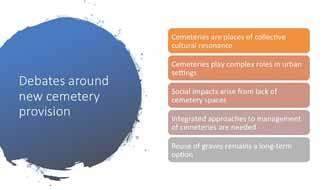

I think the rise in cremation to high levels to 70 or 75 %, you’ll know the more recent figures better than I will, has husbanded the resource and allowed it to last longer but there is from a burials perspective, a base level of requirement that we think will carry on to a long time in the future. And that’s based on deep held religious nomination preferences and other cultural reason which means there will always be an ongoing demand for burial space not least also the in turn of cremation ashes. So, we have recently been involved with local authorities who have come across this issue, they have realised its capacity is nearing its completion and they’re looking at what they can do next. So, it’s about assessing what needs you need to make going forward. I think we start from recognising what local plans and what local planners says about the collective provision of their green space and their green infrastructure their open spaces and the roles that cemetery’s play in urban settings and we need to recognise that role, we also need to recognise the role, the social impacts, the lack of provision can have on individuals and on families and their loved ones nearby and they might have to go further afield. This was certainly the case in London and what gave rise to the issue in London 20 years ago where there was a collective realisation that space was in short supply and that people living in certainly the London boroughs were having to travel quite far out of London and then indeed pay a premium in terms of the cost for those burial space in those areas. It was seen as a social issue as well as one which is purely one of supply and demand.
At that time and in London there was a thought that integrated approaches to the management of cemetery’s was needed from the point of view recognising that complex role they play, that the often-historical interest, the ecology and the recreational side of it. At that time the idea of a reuse system of graves as a long-term option was muted and a brief debate which then sort of melted away. I think there are a number of approaches we need to take when looking at assessing needs and we really apply quite a similar approach you’d take to assessing the need for housing in many ways, the census information provides a base line of population and population growth and these are updated in between census’s by household projections and along side household projections we have mortality rates and we can apply these to both district wide levels but also to individual parishes or wards and we can also break it down in terms of the population structure by religious denomination. So, we can actually estimate the population of a particular district and sub parts of that district will grow and how the age cohorts will progress and how different religious denominations will grow or decline depending on how population will grow and of


course into that is factored migration. I think we can also look at how a local area where its putting forward its plans for growth to meet its housing needs, it may be setting out large strategic development areas, these will obviously have an impact on growth of the population of a particular place and then when can factor that in as well, into thinking about what population there is going to be in 20, 30, 40 years’ time and also matching that to the likely mortality rates and then death rates per annum in those places over the whole of that period. So we will then have, when we’ve done that, a kind of clearer picture of how the
population is going to develop, how the structure of that population is going to develop, what their religious nominations are going to be and then from that, what their likely preference is going to be in terms of internment is likely to be as well. And from that then we can get an idea of what kind of burial requirement we have.
We then need to look at what the current provision is and whenever we’ve done this, we have found that we’re really starting in a quiet, information poor environment. There is often cemetery team, a management team in local authority who have an innate and good knowledge of available capacity and potential expansion of their resources, but outside of that its an information and gathering exercise to examine what other resources are out there, whether its private provision whether its private provision, parish provision, church yard provision, there’s a need then to actually engage on a site by site basis to understand what that provision is, how much has been used, what’s available. Often there is an element to management to that in terms of how the resource has been husbanded and how its being managed to fulfil the most it can provide, and then finally we need to think about how those assets that currently exist, can expand and is there potential for expansion where the demands actually going to be. So, there’s a clear kind of supply and demand element to looking at cemetery space requirements. One on the population side, one on the actual, what’s available. We need to look at how existing assets, how sensitive they are to change, how they potentially available for expansion and this is talking about either strategic expansion or in some cases the purchase of a little plot of land adjacent to a small village burial group. It can vary depending on the place and I think that we’ll show you in a minute, point to the different types of urban context in which we need to address this.
In summary, site surveys, desk based assessment and then also an important element of this is engagements with stakeholders so we can look at the data, we can carry out site based surveys to establish environmental constraints and the potential for expansion of cemetery’s but really we also need to go with the grain of the way in which the cemeteries are provided, managed, how burials take place in an area, and you can only do that through engagement with stakeholders, so this is about engaging with the parish councils if its a rural area engaging with the local authority and all its different departments, engaging with the funeral directors,


engage with adjacent authorities, trying to get a picture of how burials are managed in the area and where people are buried and what the practices are. So we will then have, when we’ve done that, a kind of clearer picture of how the population is going to develop, how the structure of that population is going to develop, what their religious nominations are going to be and then from that, what their likely preference is going to be in terms of internment is likely to be as well. And from that then we can get an idea of what kind of burial requirement we have.
We then need to look at what the current provision is and whenever we have done this, we have found that we’re really starting in a quiet, information poor environment. There is often cemetery team, a management team in local authority who have an innate and good knowledge of available capacity and potential expansion of their resources, but outside of that it’s an information and gathering exercise to examine what other resources are out there, whether its private provision whether its private provision, parish provision, church yard provision, there’s a need then to actually engage on a site by site basis to understand what that provision is, how much has been used, what’s available. Often there is an element to management to that in terms of how the resource has been husbanded and how its being managed to fulfil the most it can provide, and then finally we need to think about how those assets that currently exist, can expand and is there potential for expansion where the demands actually going to be. So, there is a clear kind of supply and demand element to looking at cemetery space requirements. One on the population side, one on the actual, what is available. We need to look at how existing assets, how sensitive they are to change, how they potentially available for expansion and this is talking about either strategic expansion or in some cases the purchase of a little plot of land adjacent to a small village burial group. It can vary depending on the place and I think that we’ll show you in a minute, point to the different types of urban context in which we need to address this.
In summary, site surveys, desk based assessment and then also an important element of this is engagements with stakeholders so we can look at the data, we can carry out site based surveys to establish environmental constraints and the potential for expansion of cemetery’s but really we also need to go with the grain of the way in which the cemeteries are provided, managed, how burials take place in an area, and you can only do that through engagement with stakeholders, so this is about engaging with the parish councils if it’s a rural area engaging with the local authority and all its different departments, engaging with the funeral directors, engage with adjacent authorities, trying to get a picture of how burials are managed in the area and where people are buried and what the practices are, because its important when thinking about a planning strategy to go with that grain, with the way in which burials currently take place.
So having a clear idea of what the need is from a population and mortality perspective, a clear idea of what resources you’ve got in terms of available sites and
capacity and then a clear idea of the way it all operates from the engagement with stakeholders, you can start to develop a planning strategy. The base provision for any local authority is they need to make sure its plan is sound, from, in a planning term, it’s a sound plan, is a key thing which all local authorities need to do, and from that then, that means they need to make sure that they’ve considered all the appropriate options which they could possibly do which would demonstrate to stake holders, perhaps the private sector, perhaps others, communities who don’t want a cemetery near them or whatever it is. All the available and appropriate options have been considered properly.
That might mean that local authorities might consider making direct provision um, where they feel there is a need to make a strategic contribution to last for decades, then they may carry out sight searches and assessment to try and select candidate sites that perform best that would meet a future cemetery need, they carry out direct development themselves, they may design and provide a new cemetery, and apply for that through the planning system, or they may allocate land. Clearly and I’m not talking much about the private sector contribution but clearly there is a big private sector contribution and appropriate policies in land used plans can facilitate that development, which of course caters often for a wider range of real space options which is the choice which is at the heart of what we need to address as well but also does cater for a wider population than perhaps just the district in which its located which is a complicating factor in thinking about burial space requirements for a particular area.
So, overall they need to set positive policies which facilitate the development of cemetery’s where they are needed and I think that they generally are based on criteria based policies and normally limited by landscape sensitivities in the main by accessibility considerations and of course basic geological and ecological considerations. It might be that strategic sites for housing developments can play a role in meeting cemetery requirements and ill say more about that. Section one of six requirements can be used to secure investment in cemeteries and then the other options is that local authorities can cooperate with their neighbours, not all local authorities are gonna have the necessary available space, um, given the tightest of some urban boundaries, to be able to meet their own needs and I think that’s a challenge that needs to be thought about in terms of the way areas work together in terms of their role, in land and urban areas.
I’m just going to give you some case studies and then I’ll make some conclusions. As you know, I was working for the London Advisory Committee in the 1990’s. It was when the Government said that we were going to abolish strategic planning, but in reality, we want strategic planning to continue and we must carry on doing this so we will have a committee that considers strategic planning. The Committee staff were employed to carry out research and coordinate activity in London. It became quite successful at it and ended up being the Mayor of London’s planning team in the great London Authority when it was established but in the 1990’. We were then approached by the Institute of Burial and Cremation Administration, Federation of Burial Authorities, and the Corperation of London - one of the largest land owning cemetery providers in London, regarding the crisis in burial space, provision in London, who were concerned that many London boroughs had run out of burial space. Their concern was the social issue at the heart of this, a concern that overall, in London, there was less than 10 years supply of burials space. That was the sell. In response we thought that was an interesting thing to look at and put together a research project, which we worked with Halcrow Fox on at the time, with the Cemetery Research Group at University of York and a body called The Landscape Partnership, to look at the landscape aspects of this.

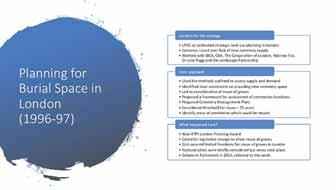
From this developed an approach which we’ve replicated recently for two further studies, basically using the methods I just outlined to you to provide a very detailed understanding of the population projections of London and factoring in all of the things which could affect it. Looking at the population composition, looking at the religious denominations and their cultural preferences, and then looking at the provision of space in the capital and seeing that strategic provision had been made but it had been used up and or some of it had been lost to other uses and couldn’t get them back.
So, faced with that and faced with the historical significance of some of the cemeteries, particularly in London, obviously to become part of that open space fabric I was talking about earlier, it led pretty quickly to a consideration of well what do you do in those areas where there isn’t really space to provide new cemeteries? You’re already at what you consider to be the plateau of cremation rates and there’s going to be an ongoing need, so how do you meet those needs?
This led pretty quickly to the consideration of whether you could have system of reusing graves and then to a thought about how you’d would provide a frame work for deciding, how and when and what you would do to do that. This in led to this idea of a cemetery management planning approach where you would, in effect, assess the value of cemeteries and different parts of cemeteries for their different roles. And then look at the places where the memorials have all been removed, people no longer knew who was buried there, no one had visited it for many, many years and could you, could reach a point where you could say that there would be a threshold after which you know subject to all of those
I think the idea was that 75 years, was felt to be an appropriate threshold which was put forward as a potential idea in a London wise planning strategy. The Great London Authority took that on and I believe there is a sole limited legislative change that did allow some reuse in London and in the early 2000’s. There was a talk of national pilots with the new labour government but I think events overtook it, it became too difficult and faded away. There was a debate in parliament where this study was mentioned in 2012 but I have not seen anything related to it since, but you may know more.
I think from my point of view this is still a long-term option if its ever revisited. This is kind of ironic because the next case study won an award for being brave and innovative on a difficult subject and this one did too, 20 years apart. So, it just means the planning system saw the value, but then did nothing about it and then 20 years later saw it again and I wonder whether we’ll do anything about it this time.
So, we move on to the Harborough cemetery strategy, literally 20 years later. I have done nothing on cemeteries in the intervening time, one of the planning officers in Harborough, recognised there was a need to address this as they were reaching a point, through internal dialogue, which I think is very important, between the cemetery managers and planners, that there was an impending shortage in that district. Their main cemetery resources were running out, but they had a very complex pattern of parish provision where there’s a right to burial in the parish so people move away but they can still come back and be buried there. There was an ongoing requirement for burials, a clear kind of main cemetery resource, but there’s a lot of activity going on in the parishes in the villages.

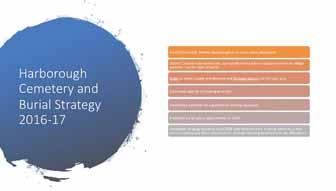
They felt there was a need to do something about it and they had already started working towards this, which happily coincided with the development of an emerging local plan. Using the same methodology, population, looking at the available supply, engaging with the stakeholders and looking at where the planning strategy is going for the district allowed the outline of a strategy to try and meet their needs which will be focus here. We went beyond the end of the planned period, as they wanted to make a provision and approach that would last 20, 30, or even 40 years. The key components of Harborough strategy were the three things I mentioned earlier and they each require different things, partly because the parish provision is quite widespread and often small resources needing small scale investment to keep that capacity going to add to it. For this they developed a Section 106 contribution, a planning obligation when a developer promotes a development which allows the local authority to ask for a planning contribution through Section 106 Planning Legislation. This has to be relevant to the development that’s taking place which is often where many requests fall down, because there isn’t that evidence so it just feels like a unfair request and the request has to be reasonable.


Armed with the detailed information that we were able to give them on the supply situation on the requirement situation and on what was need to increase that supply in each and every one of their parish and local church yards, they were able to in effect, apply to each developer and say, well if you’re gonna get that small housing scheme in that village then we can ask you for “x” thousand pounds to contribute to provision of additional burial space on this small parish burial ground, and that’s been working for them.
So, from that they’ve managed to gather contributions purely into a central fund and use it as an investment program for that local church yard provision. For that to happen you need to have an up to date picture of what the situation is so our study of what we did in 2016-17 will erode over time so they need to keep on monitoring that and get in place the internal processes which keep abreast of what provisions they’ve got, where, in order to keep that affective.
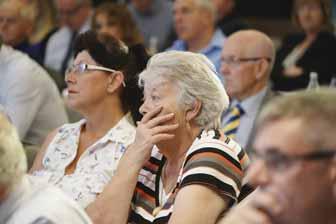

The second strand was, many authorities these days in trying to meet what our large unmet housing needs are making, bolder and bolder strategic housing land allocations for large urban extensions, for new garden villages and all we are saying is in that process the potential to supply some burial space land should not be forgotten where its, where that’s needed in an area and in this area it was needed, these would be large settlements which already needed some additional burial land space and so there was an opportunity to allocate land at an early stage before master plans become to fixed, to allocate land for burial space. Clearly there is a separate issue about how its managed about how its actually provided, who pays for it and the ongoing management but it’s a potential option and developers actually probably wouldn’t mind providing a little bit of land, because providing a little bit of land is an easy thing for them to do when you’ve got um, you know 500, 1000 hectares at your disposal.
And then the third component, which I think most local authorities would consider, is where they’ve got a main cemetery resource which they see as providing a base provision that provides for everybody, is to provide a new main cemetery and for that, that’s what the Harborough were doing and we carried out a site assessment which try to select some candidate sites which would perform well based on what you would do for any normal development, has to be near where people need it to be, it has to be accessible, has to be unconstrained in terms of the geology, the flood risk and what have you. So that was Harborough.
Northampton was the final one, the one most recently worked on. This was a more limited study just to look at the supply and the demand as a more fluid local plan situation, so Northampton is different again. In London you’ve got a very large built up area with very little opportunity to provide resource, Harborough has one big market town and then a lot of small villages and then you’ve got Northampton which is a Borough Council which has a boundary at the extent of its urban area. Here there’s no spare land within its boundary, other than land that’s already existing. They do have some land, which was provided for cemetery’s extensions to existing cemeteries, but much of it has become used for other purposes, so this becomes a community question, a social question, as to whether they reclaim it for the cemetery. You know the story, whether they continue to have the local allotments, whether that green space has taken on important bio-diversity roles? These are questions that they have to face.

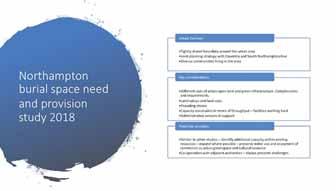
A load of evidence based studies have already been carried out, which have counted the open land, these sorts of sites as important parts of that open space fabric, it’s already in an evidence base, highlighting that it has an important open space function, so there are difficult planning questions which they have to address. To add to that, they are carrying out a joint strategy with the adjacent district in Daventry and South of Northamptonshire to produce a joint core strategy, and they also have a very complex and diverse set of communities with different religious dominations and preferences in that area.
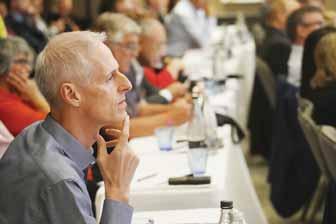
So, quite a complex set of considerations, remember that this is adding to the need to provide land for all the other things that they need to provide land for in the Northampton Borough area, with significant affects on land values where land has potential development value for housing and other commercial development. There was a particular cremation issue here as well, which they’d already, done work on, so we did not deal with that, relating to the capacity to handle sufficient number of funerals per day, the availability of facilities adjacent to it and then the administrative services run by the council which they needed to look at to make sure they were responsive enough to handle the needs of the different religious denominations in terms of the time they need to get to the funeral from the point of death.

I think in this area the solution is probably a difficult one, trying to meet what they can within their urban area, and any strategic provision is likely to have to be made in co-operation with the adjacent authorities They’re planning a joint urban planning strategy, based on Northampton as a main town, it has a tight boundary, all the other areas beyond it which rely on it economically and socially and interact with it and commute to it, need to perhaps play a part in that provision and of course that presents challenges in itself, cross boundary planning, cross boundary administration is not always easy. But that’s something they’ll probably have to look at.
So, just to draw some of all that together, I think cemetery planning in a local plan context does need to be undertaking strategically but clearly only periodically, most authorities only come alive to it when they’re getting close to running out. To be fair, where you have got well planned resources that are looking like they’ll last for a while and good monitoring of that resource,
there is no reason to keep changing the planning policies if they’re in place and the provision is made. So, it is likely to be a periodic activity, but it shouldn’t be forgotten. Strategy needs to be appropriate for the area, and you need to go, you’ll need a range of mechanisms to deal with planning strategies depending on the area it’s in.


Where planned growth is strategic in nature, with the allocation of large amounts of land, if its appropriate, there is clear opportunity to secure some land for burial space in that process. And then where there’s a finer management of resources and use of the mechanisms which I referred to earlier for example planning obligations, there’s a clear need to maintain the information base otherwise the capacity to demand things will decline. Finally, to return the more sophisticated management approaches to management or the resource and understanding what the resources would be needed if there was ever a long-term reuse of graves. Well, that’s my perspective on three studies undertaken 20 years apart. I think these demonstrate that from a planning point of view we can do it, that it is possible to get a really good and detailed picture of what the requirements are and there are planning mechanisms available to make a difference in terms of future provision, but not many local authorities appear to be doing it unless they’re suddenly realising that they have a problem and I think the challenge is to perhaps make that more widely understood and get local authorities to more proactively address the planning of their cemeteries. Thank you.
Session Chair:

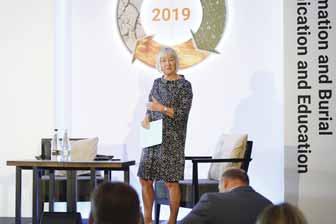
Well thank you very much indeed Lee and not least for drawing our attention to what our clearly complex factors and overlapping factors and so clearly articulating the way in which you’ve navigated through those findings. So, I’m sure
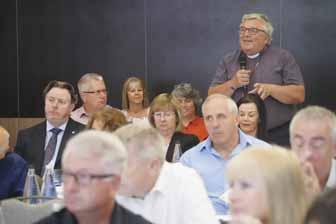

there’ll be a number of questions.

Churches Funeral Group Representative:
Thank you for that, I just wondered if you or somebody with you, work on projections for increased burial and cremations as the baby boomers shuffle of this mortal coil. I think a perfect storm is coming in terms of provision, not just for burial places but what to do with cremated remains and, and even cremation provision for that great ‘bulge’ of humanity who went through sex, drugs and rock and roll, who will die quickly because it didn’t look after themselves well. Lovely, I’m probably part of that group.
Working with developers is interesting, my experiences in the post war era, with all the building of housing estate that we did, building houses for heroes, the public land was put into recreation areas and the very little space given for burials and cremations, even places of worship in those areas, and very few of them have cemetery space with them, is my only case in point.
How are we going to be able to push developers to dedicate space in the new housing areas for burial and crematorium facilities? Its all very well to say, you need to do this but often in comes in the quid pro quo with the
local authority, they’re charged with responsibility to provide the space and then pass them on to the developer and say give us a little bit back, it doesn’t always happen and it will only happen when they can make money out of it.
Lee Searles:
To answer the first question yes, when we look at the projections forward based on the population, it takes in to account the age cohorts so it picks up the baby boomers, it picks up the age of in migrants and it then projects that forward in terms of the mortality rates and life expectancy so you get a year by year requirement.
You have to be quite sensitive with it because when you’ve got quite small communities and sub sections of the population you don’t want to literally say one of that 10 is going to die or anything like that. It literally does get down to that sort of level so you kind of aggravate the data but you can provide a pretty clear picture based on social and economic and other factors which then create a year by year requirement and from that you can catch the point at which a resource might run out and then a new provision is needed so it just helps local authorities to plan for when something needs to kick in.
In terms of the developer point, the very information you need in your pocket, if you’re going to have that negotiation is a local authority based population projection, with migration and growth plan, for a strategic location. Then when talking about all of the package of infrastructure upgrades that are going to be needed to support that new development, whether its highway schemes, whether its contribution to a new school year or whatever it is that forms part of that package, there’s no reason why, an area of burial land can’t be in it - but of course they’re not going to give it to you for nothing. As you said, so it is important to have that detailed understanding of your development in combination with what we need results in the requirement for this amount of extra space. Yes, you can say we’ve got a main cemetery resource which we can use at the district council, we’ve got this parish resource, but there’ll be a need for something else.
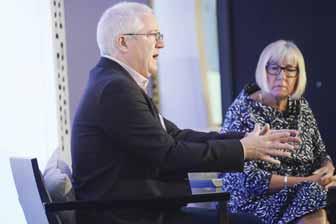
We have talked to developers about this, the largest land promoters and they do say they’d be quite interested in making that contribution, because if you think about it some of the easiest things to agree on are when a

developer says well okay, it’s a thousand hectare developments, sorry 4 or 5 hectare development its gonna have 1500 houses on it, so we can set outside x amount of land for economic development and they quite happily do that, however they don’t actually make any provision for the infrastructure for that economic land, they don’t develop the economic land but it’s there. Often that’s a concern with this, because if there are lots of service sites around and it doesn’t get developed, but there’s no reason why they couldn’t set aside burial land if the local authority concerned wanted to then invest in that land and provide the cemetery and what have you.
There’s a big issue about all these things when thinking about who is actually going to provide it and who’s going to manage it for a long term. One point since you asked the question, on church yards which, as a planner seems a bit crazy but its just the way it works I guess, is that, like a one way ticket of closing church yards, it’s a one way ticket, you never come back and you’ve got all this space around the churches and no one knows who is buried there, all the graves are removed, what seems to me you know, just with a common sense hat on that that’s got to be a resource for the future but of course, I won’t go there.
Audience Question:
Who is going to ensure that local authorities and developers pick up this responsibility, be it through legislation in parliament or to make sure that the local authorities make it part of planning condition? Otherwise there’s only going to be, planners who are awake with possibilities that might put it out there.
Lee Searles:
Well, in the places where we’ve worked, the impetus for the action in all those three cases that we did was from the burial cemetery mangers in the local authorities, they’re the ones that raised the issue and then managed to somehow cut through to their planning colleagues who then raised it. Yes, we also, though bodies such as the Town Planning Institute can promote this from the other side as well to try, to try to make it more well known that burials etc should be part of the consideration, when you’ve got a local plan, that you have to prepare and the local plan is gonna cost, 2 to £400,000 of tax payers money to develop then you cover off all your core requirements first. Unfortunately a study in to burial space requirements is low on the list unless there’s a real problem, it just so happened in the places where we’ve done it and there’s been a real problem and they’ve recognised it.
The microphone is just coming.
Audience Question:
Speaking as a member of the sex, drugs and rock and roll generation, and the mortal coil, Lee, I very much appreciated your illustrate examples but in Japan where I practice and in many crowded communities in America, cremation is alleviating much of this pressure.
Do I infer from your presentation that this all presupposes full body burial in the indefinite future or how can cremation be brought into the picture here in the UK?
Lee Searles:
The assumption that we have always made, established through the London study was always based on the maximisation of cremation but then with a base requirement amongst some sections of the community for ongoing burial and that’s the, so the supply and demand is what is based on that and then factoring in the need for then separate cremation obviously, space, and also for the different religious denomination requirements as they affect the use of plots and what have you.
So, it has always been based on a max, what we consider to be a maximised, maybe this will debate about what that maximum level is but, if its around 75% then at least roughly 25% for burials, whether it would be more or not would depend on population.
Audience Member:
I am just interested in understanding the Section 106 you talked about, as provision of cemeteries within that, in my experience within local authorities, is that always seems a green space so there’s a park built, there’s a playground built and that’s where it all automatically goes to.
Lee Searles:
The particular approach we developed with Harborough, which they’ve actually used, was in a context of a village provision and small parish burial grounds and some church yards and understanding from those bodies who are managing the resource, what they would like and what they would like and what they needed to keep the resource going. It would often relate to the availability to the small plot of land adjacent to the existing resource which they could buy or / and then the money they required to put in the pathways and the infrastructure to make that in to usable space, so with that in mind, armed with then the other side of it the demonstrable need, they’ve come up with a programme which is specific to each and every parish rather than a general kind of call, that goes in to a general pot and they’ve used that then to demand and successfully demand contributions from local housing developers who are developing schemes in that parish. Then they’ve used that money through a program of investment to make the improvements, but it does need that up to date, a demonstrable evidence base to underpin what your asking for or otherwise it just feels like an empty request and again it was in a space specific context of space next to, adjacent parishes, it wasn’t a general contribution to a green space or leisure.
Audience Question:
Just addressing the point about lack of supply, I take the view that lack of supply in local authorities is down to a lack of leadership essentially, I would expect people working in local authority, burial and cremation areas to be telling councillors where they are in terms of the supply and how much they’ve got left. That happened in Cheshire East and the demised authority before it, to a point where Cheshire East now has over a hundred years of supply, which is good. That is spread over 11 cemeteries, but its also spread over something like 120 parishes. Many parishes do absolutely nothing for their communities in terms of thinking that people who have grown up and lived in a village all of their lives, might actually want to be buried in the vicinity of it as apposed to having to travel 20 miles to the hub cemetery if you like. So, I just wondered whether you thought, bearing in mind that your presentation addressed the higher level authority in terms of strategic thinking, it doesn’t have to be that strategic, it can be based upon relief systems and want, and I just wonder what you thought parish councils could do? They’re at their lower level, they’re the closest to voters and obviously closest to the people that are living in those areas, so what can parishes do, or should they do?
Lee Searles:
In the Harborough, for example, as is the only area that was parished, speaking to each and every parish council and each and every church, with a church yard, they did have a clear understanding in the main of what their resource was and what they wanted to do to address it, and they did identify um, the actions that they’d need to take.
They did take it seriously from the point of view of maintaining the ability for people to be buried in their parish because they did have that right to burial of people who had been born there and so it was seen as an ongoing thing that they needed to address. Until recently I was an elected Parish Councillor myself in Cirencester and there is an issue there where the district council runs the only district council cemetery in the whole district, which is in that town.
There’s a question over its management and over its future capacity, and there are active discussions about taking on that responsibility because I think you’re right. The issues around devolution of responsibilities has been on the agenda for a long, long time and neighbourhood planning and the move to often unitary status um, principle authorities where you have quite large council areas plus a lot more responsibility on individual towns, at town councils, parish councils to take up more responsibility at the local level. I think where that system has been in place longest, such as Wilshire, Cornwall, and Shropshire, they’ve got very good local to principle authority relationships where they do take on rounded more responsibility, not just on burials but all matter of things and I think there’s no reason why burials couldn’t play a part in that as well.
You are right it is probably more about the future.


